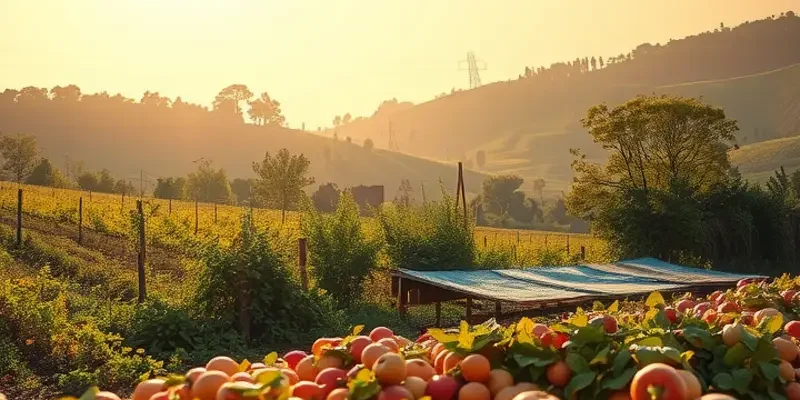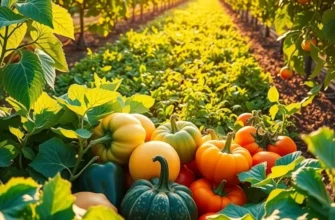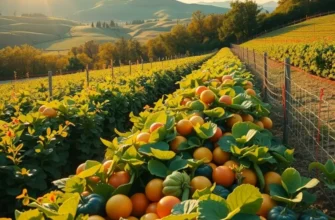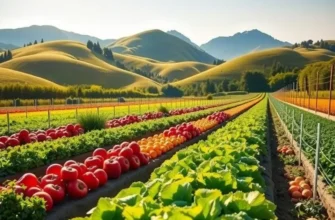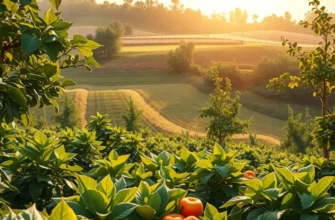Reducing food packaging waste is crucial for anyone aiming to make environmentally responsible choices in their diets. By understanding the impact of packaging on our planet and exploring options for sustainable food consumption, we can all contribute to a healthier, cleaner environment. This journey includes simple yet effective steps that empower individuals to make changes, fostering a community passionate about reducing waste and promoting sustainability.
Understanding the Environmental Impact of Food Packaging

The myriad choices available on grocery shelves often obscure the significant environmental impact of food packaging. While the convenience of packaging is undeniable, its effects on ecosystems cannot be overlooked. To grasp the larger picture, one must first consider the types of packaging materials commonly used and their lifecycle.
Food packaging typically includes plastic, paper, glass, and metal. Among these, plastic is the most prevalent, yet it poses severe environmental challenges. It is manufactured from non-renewable fossil fuels and often ends up in oceans and landfills, where it takes hundreds of years to decompose. The breakdown process releases harmful chemicals, impacting marine and terrestrial ecosystems, and threatening wildlife that mistake it for food.
Paper packaging, although more biodegradable than plastic, still contributes to environmental degradation. Its production demands large quantities of water and energy, and the sourcing process may involve deforestation. This threatens biodiversity and disrupts natural carbon storage, exacerbating the climate crisis.
Glass and metal packaging have their own ecological footprints. While they are infinitely recyclable, their production is energy-intensive. Mining and manufacturing processes contribute to habitat destruction and greenhouse gas emissions. Despite the recyclability of these materials, inadequate recycling facilities and systems in many regions mean that a significant portion still ends up in landfills.
Understanding the environmental cost of these materials highlights the need to reduce packaging waste. Excess packaging not only increases pollution but also contributes to landfill overflow. Landfills release methane, a potent greenhouse gas, and leachate, which can contaminate local water bodies. This affects not only wildlife but also human communities that rely on these ecosystems.
A full understanding of food packaging’s impact necessitates examining its entire lifecycle. From extraction and production to disposal, each stage presents environmental challenges. The energy consumed and waste generated in these processes encourage a shift in consumer behavior towards more sustainable practices.
For those seeking to minimize their ecological footprint, adopting eco-friendly packaging options is crucial. Consumers can opt for products with minimal packaging, choose reusable or biodegradable alternatives, and support brands that prioritize sustainable practices. By doing so, they contribute to a shift in market demand, incentivizing manufacturers to adopt more sustainable production methods.
This knowledge empowers consumers to make informed choices, supporting a transition to less harmful packaging options. For tips on sustainable food storage, check out eco-smart kitchen storage. Together, these practices represent a collective effort toward a more sustainable future, by reducing the reliance on traditional packaging and promoting the health of our planet.
Practical Tips for Minimizing Food Packaging Waste

Reducing food packaging waste requires easily implementable strategies that empower consumers to make meaningful changes. One effective approach is to opt for bulk purchasing. By buying larger quantities, consumers can minimize individual packaging use, which not only reduces waste but often saves money. Bulk buying encourages the use of reusable containers, allowing for transaction savings to be reused in sustainable ways.
Choosing local produce also plays a significant role in reducing packaging waste. Local goods often involve less packaging because they require shorter transport distances, minimizing the need for additional product protection. Moreover, supporting local farmers contributes to your community’s economic stability while reducing your carbon footprint.
Incorporating reusable containers when shopping can substantially decrease packaging waste. Investing in durable, multi-use bags and containers diminishes the reliance on single-use plastics and paper products. Keep a set of these containers handy for your grocery trips and even when dining out to avoid unnecessary packaging.
Mindful shopping involves planning meals in advance, which helps reduce impulse buys often heavily packaged. By creating a shopping list focused on what’s truly needed, you can prevent over-purchasing and the consequent waste from spoiled food. Explore practical ingredient batching to streamline your meal planning process effectively.
Composting food scraps is essential in cutting down waste bound for landfills. This practice not only reduces garbage but transforms organic waste into nutrient-rich soil for gardening. Composting doesn’t have to be complicated; start with simple bin systems suitable for any living space, including urban environments.
Exploring alternatives to typical packaging materials further aids in waste reduction. Seek products packaged in materials like glass, metal, or cardboard, which are more sustainable and often recyclable. Supporting businesses that adopt these eco-friendly practices encourages broader market changes towards sustainability.
Lastly, consider supporting companies that prioritize sustainable packaging. Many businesses are moving towards greener solutions, using biodegradable and compostable materials. By choosing these products, consumers send a clear demand signal for environmentally responsible options.
Embracing these strategies not only contributes to minimizing packaging waste but also fosters an environmentally conscious lifestyle. The cumulative effect of small changes by many individuals can lead to significant environmental benefits.
Final words
Embracing sustainable practices to reduce food packaging waste not only benefits the environment but also fosters a healthier lifestyle. By understanding the impact of packaging and making consistent, eco-friendly choices, individuals can contribute greatly to the fight against pollution and waste. Every small action counts, from opting for bulk purchases to supporting local, sustainable businesses. As you make these conscious choices, encourage others in your community to do the same, fostering a ripple effect of positive change. Together, we can create a cleaner future and inspire a collective movement toward sustainability.

